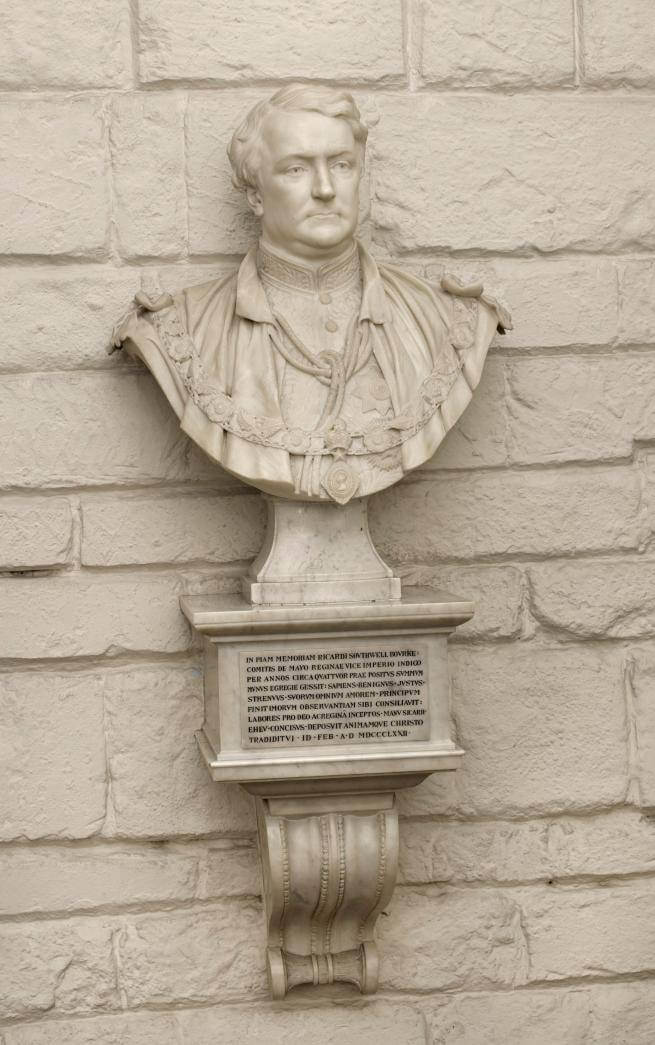Richard Southwell Bourke, 6th Earl of Mayo (1822-72)

Image courtesy of Pantheons: Sculpture at St Paul's Cathedral.
Richard Southwell Bourke
6th Earl of Mayo (1822-72)
This work is part of The East India Company at St Paul’s: A digital trail produced in collaboration with Stepney Community Trust.
Written by Niaz Alam, a writer and independent adviser on responsible business issues, a past board member of the London Pensions Fund Authority, and former Hon. Secretary of the Foreign Press Association.
The following text is available in Bengali, Gujurati, Urdu, Hindi, Punjabi, and Tamil. Please email CollectionsDepartment@stpaulscathedral.org.uk to request a copy.

![]()
Bourke was the fourth Viceroy of India appointed after the British Crown’s nationalisation of the East India Company in 1858. He had previously been Chief Secretary for Ireland.
He is the only Viceroy to have been killed in office, attacked whilst touring the Raj’s controversial penal colony in the Andaman Islands in the Bay of Bengal.
His small statue is rather easy to miss.
As a British Bangladeshi, I inherited an interest in history from my parents. They were born in British India and educated in the East Pakistan era, before migrating to the UK.
Bourke’s obituaries and this memorial reflect complete confidence in the legitimacy and continuity of colonial rule. This is no surprise, as five years after his death, Victoria was proclaimed Empress of India.
Bourke’s time as a senior official is credited by some biographers as a period of major advances in public works in India. His tenure did not, however, produce any fundamental improvements for ordinary Indians. Whereas late 19th-century Britain saw major advances towards achieving mass literacy, the literacy rate in India was still very low by the time empire ended in India in 1947, with less than one in five adults recorded as literate in the census of 1950.
Indian nationalists have consistently criticised colonial policies for slowing down responses to crop failures and increasing the death tolls in famines. It is telling that Victoria became Empress amid the Great Indian Famine of 1876–1878, during which several million people died. Given that famines are not caused just by climatic events but also by a combination of social, economic, and political factors, there continues to be significant scholarly debate about whether the many famines in India were worsened or even caused by colonial rule.
My father often talked about the history of anti-colonial struggles across South Asia and the wider British Empire, including in Ireland. Reflecting on a documentary about the architecture of New Delhi, he remarked on how grand imperial buildings became, even close to the end. He might consider the relative modesty of Bourke’s monument to be rather prescient. Nothing lasts forever.
For detailed information about this monument, visit the Pantheons: Sculpture at St Paul's Cathedral website.


The East India Company at St Paul's
Explore the full digital trail produced in collaboration with Stepney Community Trust.




